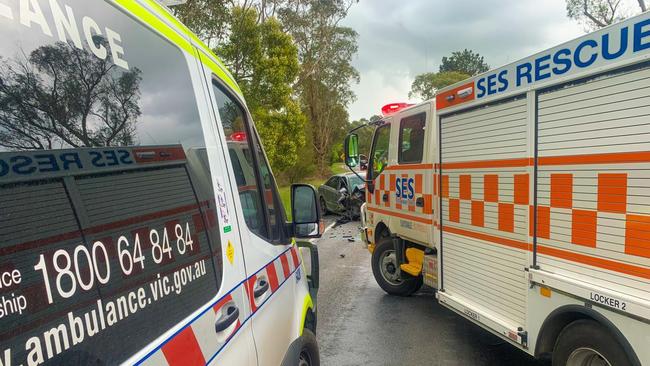Australian Automobile Association demands release of road toll data as deaths rise
Australia’s peak motoring body is urging the federal government to withhold safety funding unless states release vital data to help prevent road deaths.

Victoria
Don't miss out on the headlines from Victoria. Followed categories will be added to My News.
Victoria is falling behind in progressing key road safety targets and keeping data about others secret, according to Australia’s peak motoring body, as more people tragically die on the state’s roads.
The Australian Automobile Association is demanding the federal government force states to hand over data relevant to reaching the national goals as a “precondition” to receiving Commonwealth road funding.
In a new report, it warns that Victoria is not on track to meet a national plan to halve the annual road toll by 2030, nor slash the number of serious injuries by 30 per cent.
The National Road Safety Strategy 2021-2030 also set goals to reduce the number of children dying in accidents, as well as deaths on highways.
But the report flags that the progress on several targets cannot be measured because jurisdictions are not making the data public.

“Road deaths have increased over the past five years, and a lack of road trauma data reporting makes it difficult to understand the reasons for this trend and to identify the measures needed to prevent them,” AAA managing director Michael Bradley said.
“The unwillingness of governments to collect or report data needed to measure targets undermines the strategy’s credibility and inhibits an evidence-based response to Australia’s worsening road safety performance.’’
The AAA’s benchmarking report reveals that 259 people died on Victoria’s roads in the 12 months to March, compared to 236 at the same time last year.
“This is an increase of 9.7 per cent,” it states.
“This represents 55 more road deaths than the pro rata target of 204.”
The national plan does not have specific target reductions for each jurisdiction in order to reach the 50 per cent road toll fall.
But NSW was the only jurisdiction in Australia that didn’t go backwards.
The RAA states that if other jurisdictions matched the NSW annual road death rate of 3.53 per 100,000 population, 282 lives could have been saved across the country.
This includes 24 lives in Victoria, which has a fatality rate slightly below the national target of 3.94 at 3.89.
Mr Bradley said the nation was “miles behind” the goal to halve the national death toll by 2030, with analysis showing it was now 19 per cent higher than if it was on track.
He noted that the federal budget, released last week, allocated money towards improving road safety data.
“The AAA looks forward to understanding how this money will be spent, what data will be collected, and whether it will be published in a timely manner,” Mr Bradley said.
More than 1200 people died on Australian roads in the 12 months to March, 2023.





